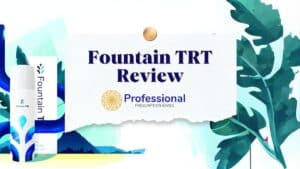Testosterone Replacement Therapy, commonly referred to as TRT, has seen a surge in popularity and discussions in recent years. From sports circles to health forums, TRT is frequently debated and dissected. Yet, amidst all the buzz, it's crucial for anyone considering this therapy to have a solid understanding of its benefits, risks, and purposes.
Key Points:
Testosterone Replacement Therapy (TRT) is used to treat low testosterone levels, essential for male development, muscle mass, and mood regulation, caused by aging, hypogonadism, or other medical conditions.
TRT is administered via gels, patches, injections, or pellets and can improve mood, energy, muscle mass, and sexual function, but further research is needed on its long-term effects.
TRT carries risks like cardiovascular issues, sleep apnea, and prostate concerns, and is recommended only for those with medically diagnosed testosterone deficiency, not as a universal anti-aging solution.
Understanding TRT: Definition and Basics
Testosterone Replacement Therapy (TRT) is a medical treatment that involves restoring or elevating testosterone levels in men whose bodies produce insufficient amounts. Testosterone is a hormone primarily produced in the testicles, playing a pivotal role in male development, muscle mass, bone density, and even mood regulation. While its presence is most commonly associated with male physiology, women also produce testosterone, albeit in smaller quantities.
Reasons for TRT
The primary reason individuals seek TRT is due to low testosterone levels, which can manifest in various ways:
Symptoms:
These may include fatigue, low libido, weight gain, difficulty concentrating, mood swings, and reduced muscle mass, among others.
Causes:
Aging is a natural cause of declining testosterone levels. However, conditions like hypogonadism, where the testes don't produce sufficient testosterone, can also be culprits. Other factors might include injury to the testicles, chemotherapy, chronic illnesses, or certain genetic conditions.
In some cases, the diagnosis of hypogonadism – either primary (stemming from the testicles) or secondary (involving the brain's hypothalamus or pituitary gland) – provides clear medical substantiation for TRT.
Methods of Administration
TRT can be introduced into the body in various forms:

Gels and Patches: These are applied to the skin, allowing testosterone to be absorbed directly into the bloodstream. Popular due to their ease of use, they do, however, pose a risk of transferring testosterone to others through skin contact.

Injections: Testosterone can be injected directly into the muscles. While injections are typically administered every few weeks, frequency varies based on the formulation and individual needs.

Pellets: Implanted under the skin, these release testosterone steadily over time. They usually last for 3-4 months before requiring replacement.
Each method has its benefits and downsides. The choice often depends on personal preferences, medical advice, and cost considerations.
Potential Benefits of TRT
For those with medically diagnosed low testosterone, TRT can offer a range of benefits:
Mood and Energy
Patients often report improvements in mood, reduced feelings of sadness or depression, and a surge in energy.
Muscle and Bone
TRT can lead to increased muscle mass and bone density, countering osteoporosis risks and aiding physical fitness.
Sexual Wellness
Enhanced libido and improved sexual performance are some of the most widely recognized advantages of TRT.
Other Health Benefits
Some studies suggest that TRT can improve cognitive function, reduce fat mass, and benefit the heart, though more research is needed in these areas.
Risks and Side Effects
While TRT offers multiple benefits, it's not devoid of risks and potential side effects:
Cardiovascular Risks
Some studies indicate that TRT might increase the risk of heart attacks or strokes, especially in older men. However, the evidence is mixed, and ongoing research aims to clarify this relationship.
Sleep Apnea
TRT can exacerbate sleep apnea, a condition where breathing briefly stops during sleep, in some men.
Blood Clots
There is a potential risk of developing blood clots in the deep veins, a condition known as deep vein thrombosis. This can lead to pulmonary embolism, a serious condition.
Prostate Concerns
Elevated testosterone can stimulate prostate growth. There's ongoing debate about TRT's role in prostate cancer development, though it's crucial to monitor prostate health during therapy.
Other Side Effects
These can include acne, breast enlargement, testicular shrinkage, and elevated red blood cell counts, among others.
Who Should Consider TRT?
Not all individuals with signs of low testosterone should jump into TRT:
Controversies and Misunderstandings Surrounding TRT
TRT has had its share of controversies:
Conclusion
TRT can be transformative for individuals with a genuine deficiency, enhancing their quality of life. However, it's not a one-size-fits-all solution. A balanced, well-informed approach, with regular medical consultation, is essential to harness its benefits safely and effectively.







